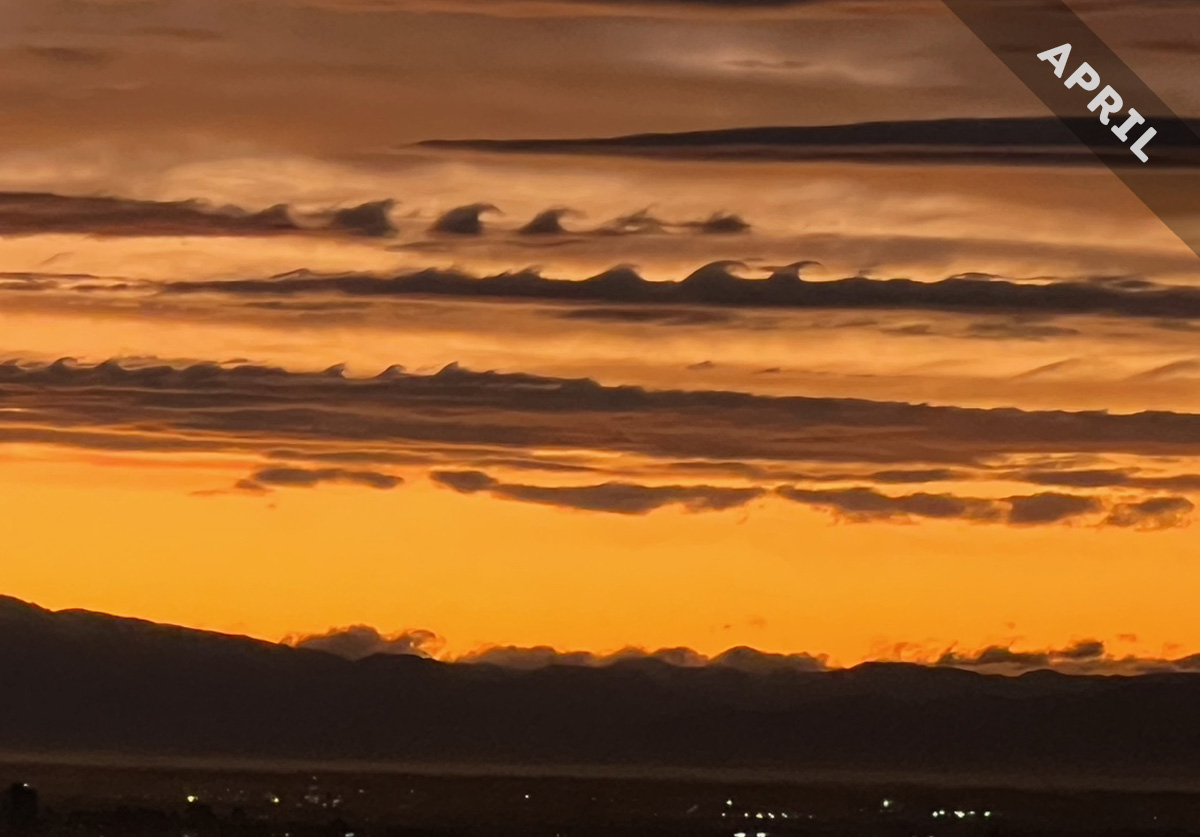Wave Hello to Fluctus
At the Cloud Appreciation Society, we often talk about wind shear. This is when the speed and/or direction of the wind varies greatly with altitude. It is a wind pattern that plays an integral role in sculpting a number of different cloud formations. But the most iconic wind-shear-shaped formation has to be the cloud feature known as fluctus.
Associated with five of the ten main cloud types, fluctus features are distinctive breaking-wave curls of cloud. They sometimes form one after the other along the top of a cloud, looking like a whole train of ocean breakers. The waves are the result of a phenomenon of fluid dynamics known as Kelvin-Helmholtz instability, which is why this cloud’s other, less official, name is the Kelvin-Helmholtz cloud.
Fluctus features are closely related to the cloud variety undulatus, which is when a cloud is arranged in a pattern of parallel rolls or undulations that develop at the boundary between differently flowing airstreams – in other words, in a region of wind shear. The air above is typically flowing faster than the air below. Undulations develop in between – the undulatus cloud variety – and when the difference in the airstreams is just right, the tops of the undulations curl over to form fluctus features.
Fluctus look most dramatic when they form in a series, like in the ones here on Altocumulus clouds spotted by Murray Strong (Member 61,740) over Christchurch, New Zealand. Long successions of them like these are rare, but cloudspotters eager to add fluctus to their collections need not fret. Individual fluctus curls do sometimes form on the top of everyday Cumulus clouds when they develop beneath a strong crosswind.
No matter where you find them, you’ll need to be paying close attention to spot fluctus clouds. These are very short-lived features, dissipating away after just a few minutes as they fully curl over and break up. No sooner do you wave hello to fluctus, then it’s time to wave goodbye.
Altocumulus with fluctus features spotted over Christchurch, New Zealand by Murray Strong (Member 61,740). View this in the photo gallery.




Interesting seeing the cloud of the month (Kelvin-Hemholtz – Fluctus). A photo of Fluctus taken early one morning appeared on our village website very recently. The photo was taken over the village. The village being Westonzoyland which our esteemed leader will know is not a million miles from PO Box 81 !
We hope you submitted it to the Photo Gallery, Dave. It is always nice to see some fluctus local to the Cloud Appreciation Society HQ!